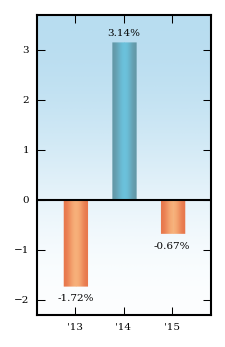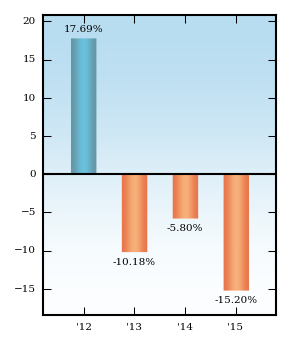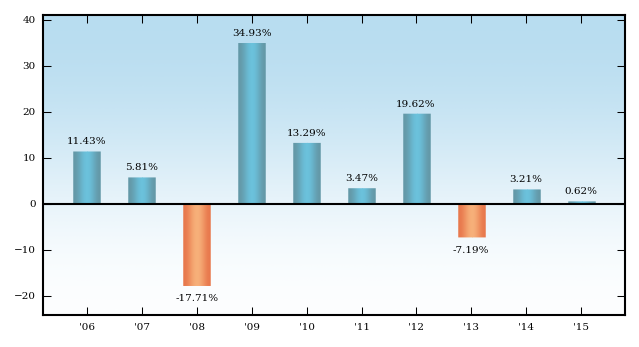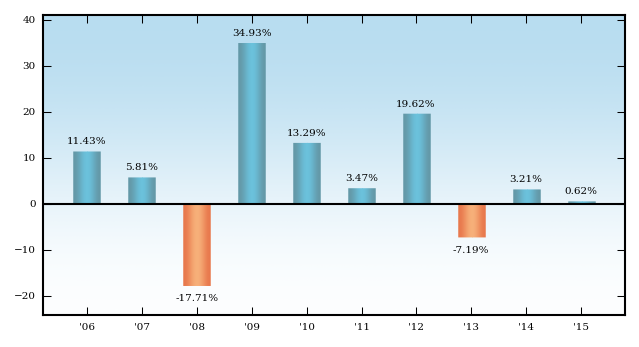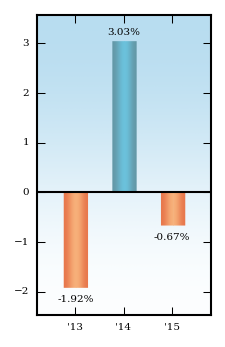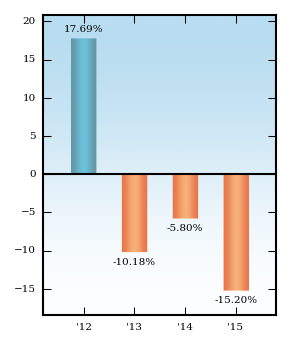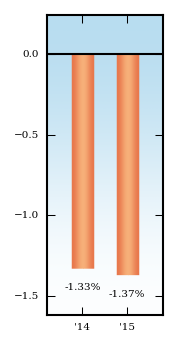| Investor Class Shares | T. Rowe Price Emerging Markets Bond Fund | ||||||||||||||||||||||||
| SUMMARY T. Rowe Price Emerging Markets Bond Fund | ||||||||||||||||||||||||
| Investment Objective | ||||||||||||||||||||||||
| The fund seeks to provide high income and capital appreciation. | ||||||||||||||||||||||||
| Fees and Expenses | ||||||||||||||||||||||||
| This table describes the fees and expenses that you may pay if you buy and hold shares of the fund. | ||||||||||||||||||||||||
| Fees and Expenses of the Fund Shareholder fees (fees paid directly from your investment) | ||||||||||||||||||||||||
| ||||||||||||||||||||||||
| Annual fund operating expenses (expenses that you pay each year as a percentage of the value of your investment) | ||||||||||||||||||||||||
| ||||||||||||||||||||||||
| Example | ||||||||||||||||||||||||
| This example is intended to help you compare the cost of investing in the fund with the cost of investing in other mutual funds. The example assumes that you invest $10,000 in the fund for the time periods indicated and then redeem all of your shares at the end of those periods. The example also assumes that your investment has a 5% return each year and that the fund’s operating expenses remain the same. Although your actual costs may be higher or lower, based on these assumptions your costs would be: | ||||||||||||||||||||||||
| ||||||||||||||||||||||||
| Portfolio Turnover | ||||||||||||||||||||||||
| The fund pays transaction costs, such as commissions, when it buys and sells securities (or “turns over” its portfolio). A higher portfolio turnover rate may indicate higher transaction costs and may result in higher taxes when fund shares are held in a taxable account. These costs, which are not reflected in annual fund operating expenses or in the example, affect the fund’s performance. During the most recent fiscal year, the fund’s portfolio turnover rate was 61.5% of the average value of its portfolio. | ||||||||||||||||||||||||
| Investments, Risks, and Performance Principal Investment Strategies | ||||||||||||||||||||||||
| The fund will normally invest at least 80% (and potentially all) of its net assets (including any borrowings for investment purposes) in debt securities of emerging market governments or companies located in emerging market countries. The fund’s investments in debt securities typically consist of corporate and sovereign bonds. The fund considers frontier markets to be a subset of emerging markets and any investments in frontier markets will be counted toward the fund’s 80% investment policy. The fund relies on a classification by either JP Morgan or the International Monetary Fund to determine which countries are emerging markets. Fund holdings may be denominated in U.S. dollars or non-U.S. dollar currencies, including emerging market currencies. The extent, if any, to which the fund attempts to cushion the impact of foreign currency fluctuations on the dollar depends on market conditions. Fund holdings may include the lowest-rated bonds, including those in default, and there are no overall limits on the fund’s investments that are rated below investment-grade (BB or lower, or an equivalent rating), also known as “junk” bonds. Although the fund expects to maintain an intermediate- to long-term weighted average maturity, there are no maturity restrictions on the overall portfolio or on individual securities. Security selection relies heavily on research, which analyzes political and economic trends as well as creditworthiness of particular issuers. The fund tends to favor bonds it expects will be upgraded. The fund sells holdings for a variety of reasons, such as to adjust its average maturity or credit quality, to shift assets into and out of higher-yielding securities, or to alter geographic or currency exposure. The fund is “nondiversified,” meaning it may invest a greater portion of its assets in fewer issuers than is permissible for a “diversified” fund. While most assets will be invested in bonds, the fund may enter into forward currency exchange contracts in keeping with the fund’s objectives. Forward currency exchange contracts would primarily be used to help protect the fund’s non-U.S. dollar denominated holdings from unfavorable changes in foreign currency exchange rates, although other currency hedging techniques may be used from time to time. | ||||||||||||||||||||||||
| Principal Risks | ||||||||||||||||||||||||
| As with any mutual fund, there is no guarantee that the fund will achieve its objective. The fund’s share price fluctuates, which means you could lose money by investing in the fund. The principal risks of investing in this fund are summarized as follows: Active management risk The fund is subject to the risk that the investment adviser’s judgments about the attractiveness, value, or potential appreciation of the fund’s investments may prove to be incorrect. If the investments selected and strategies employed by the fund fail to produce the intended results, the fund could underperform in comparison to other funds with similar objectives and investment strategies. Fixed income markets risk Economic and other market developments can adversely affect fixed income securities markets. At times, participants in these markets may develop concerns about the ability of certain issuers of debt securities to make timely principal and interest payments, or they may develop concerns about the ability of financial institutions that make markets in certain debt securities to facilitate an orderly market. Those concerns could cause increased volatility and reduced liquidity in particular securities or in the overall fixed income markets and the related derivatives markets. A lack of liquidity or other adverse credit market conditions may hamper the fund’s ability to sell the debt securities in which it invests or to find and purchase suitable debt instruments. International investing risk Investing in the securities of non-U.S. issuers involves special risks not typically associated with investing in U.S. issuers. International securities tend to be more volatile and less liquid than investments in U.S. securities and may lose value because of adverse local, political, social, or economic developments overseas, or due to changes in the exchange rates between foreign currencies and the U.S. dollar. In addition, international investments are subject to settlement practices and regulatory and financial reporting standards that differ from those of the U.S. Emerging markets risk The risks of international investing are heightened for securities of issuers in emerging market countries. Emerging market countries tend to have economic structures that are less diverse and mature, and political systems that are less stable, than those of developed countries. In addition to all of the risks of investing in international developed markets, emerging markets are more susceptible to governmental interference, local taxes being imposed on international investments, restrictions on gaining access to sales proceeds, and less liquid and less efficient trading markets. Frontier markets, considered by the fund to be a subset of emerging markets, generally have smaller economies and less mature capital markets than emerging markets. As a result, the risks of investing in emerging market countries are magnified in frontier market countries. Frontier markets are more susceptible to abrupt changes in currency values, less mature markets and settlement practices, and lower trading volumes that could lead to greater price volatility and illiquidity. Currency risk Because the fund may invest in securities issued in foreign currencies, the fund is subject to the risk that it could experience losses based solely on the weakness of foreign currencies versus the U.S. dollar and changes in the exchange rates between such currencies and the U.S. dollar. Any attempts at currency hedging may not be successful and could cause the fund to lose money. Credit risk This is the risk that an issuer of a debt security could suffer an adverse change in financial condition that results in a payment default, security downgrade, or inability to meet a financial obligation. Junk bond risk The risk of default is much greater for emerging market bonds and securities rated as below investment grade (“junk” bonds). The fund is exposed to greater credit risk than other bond funds because companies and governments in emerging markets are usually not as strong financially and are more susceptible to economic downturns. Junk bonds should be considered speculative as they carry greater risks of default and erratic price swings due to real or perceived changes in the credit quality of the issuer. Any investments in distressed or defaulted securities subject the fund to even greater credit risk than investments in other below investment-grade bonds. Investments in obligations of restructured, distressed and bankrupt issuers, including debt obligations that are already in default, generally trade significantly below par and may be considered illiquid. Defaulted securities might be repaid only after lengthy bankruptcy proceedings, during which the issuer might not make any interest or other payments, and result in only partial recovery of cash payments or no recovery at all. In addition, recovery could involve an exchange of the defaulted obligation for other debt or equity securities of the issuer or its affiliates, which may in turn be illiquid or speculative and be valued by the fund at significantly less than its original purchase price. Interest rate risk This risk refers to the chance that interest rates will increase, causing a decline in bond prices (bond prices and interest rates usually move in opposite directions). Generally, securities with longer maturities or durations and funds with longer weighted average maturities or durations carry greater interest rate risk. Liquidity risk This is the risk that the fund may not be able to sell a holding in a timely manner at a desired price. Reduced liquidity in the bond markets can result from a number of events, such as significant trading activity, reductions in bond inventory, and rapid or unexpected changes in interest rates. Less liquid markets could lead to greater price volatility and limit the fund’s ability to sell a holding at a suitable price. Nondiversification risk As a nondiversified fund, the fund has the ability to invest a larger percentage of its assets in the securities of a smaller number of issuers than a diversified fund. As a result, poor performance by a single issuer could adversely affect fund performance more than if the fund were invested in a larger number of issuers. The fund’s share price can be expected to fluctuate more than that of a comparable diversified fund. Derivatives risk The fund uses forward currency exchange contracts and is therefore exposed to greater volatility and losses in comparison to investing directly in foreign bonds. Forward currency exchange contracts are also subject to the risks that anticipated currency movements will not be accurately predicted, a counterparty will fail to perform in accordance with the terms of the agreement, and the chance that potential government regulation could negatively affect the fund’s investments in such instruments. | ||||||||||||||||||||||||
| Performance | ||||||||||||||||||||||||
| The bar chart showing calendar year returns and the average annual total returns table provide some indication of the risks of investing in the fund by showing how much returns can differ from year to year and how the fund’s average annual returns for certain periods compare with the returns of a relevant broad-based market index, as well as with the returns of one or more comparative indexes that have investment characteristics similar to those of the fund. The fund’s performance information represents only past performance (before and after taxes) and is not necessarily an indication of future results. The fund can also experience short-term performance swings, as shown by the best and worst calendar quarter returns during the years depicted. | ||||||||||||||||||||||||
| Emerging Markets Bond Fund Calendar Year Returns | ||||||||||||||||||||||||
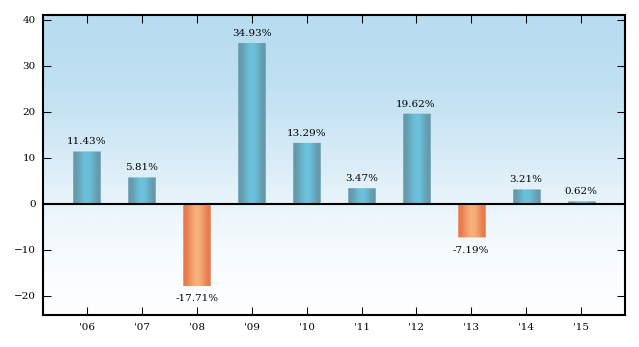
| ||||||||||||||||||||||||
| ||||||||||||||||||||||||
| In addition, the average annual total returns table shows hypothetical after-tax returns to demonstrate how taxes paid by a shareholder may influence returns. After-tax returns are calculated using the historical highest individual federal marginal income tax rates and do not reflect the impact of state and local taxes. Actual after-tax returns depend on an investor’s tax situation and may differ from those shown. After-tax returns shown are not relevant to investors who hold their fund shares through tax-deferred arrangements, such as a 401(k) account or individual retirement account. In some cases, the figure shown for “returns after taxes on distributions and sale of fund shares” may be higher than the figure shown for “returns before taxes” because the calculations assume the investor received a tax deduction for any loss incurred on the sale of shares. | ||||||||||||||||||||||||
| Average Annual Total Returns Periods ended December 31, 2015 | ||||||||||||||||||||||||
| ||||||||||||||||||||||||
| Updated performance information is available through troweprice.com or may be obtained by calling 1-800-225-5132. | ||||||||||||||||||||||||
